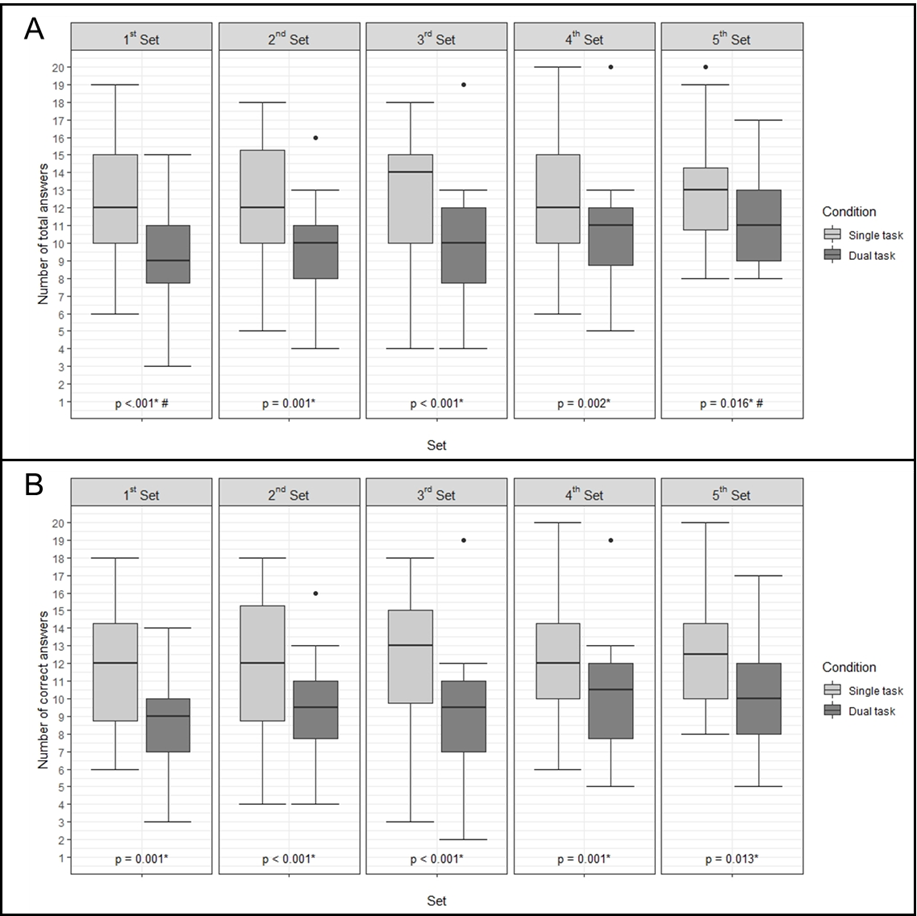By Fabian Herold and Dennis Hamacher
Most people go to the gym to become fitter, build muscles, and shape their body, but they may not be fully aware that they strengthen their brain, too. In recent years, the evidence showing that resistance exercise training can improve cognitive functions has accumulated. However, the processes which lead to an improvement of cognitive functions are currently not well understood. In the sense of “use-it-or-lose-it”, one explanatory approach postulates that resistance exercise “indirectly” trains higher cognitive functions because their execution demands higher cognitive processes (e.g., attention). This phenomenon might be comparable with a cognitive training (e.g., doing a Sudoku or memory game such as pairs) in which specific cognitive functions are trained by engaging those regularly. Such a regular engagement triggers biological processes (e.g., changes in functional brain activation) leading to the preservation or the increase in cognitive performance. In this regard, resistance exercise training might “indirectly” train specific higher cognitive functions because higher cognitive processes are engaged to execute a resistance exercise. Although it is likely that this assumption is true, whether resistance exercise requires higher cognitive processes has only been sparsely studied so far. Therefore, this study aimed to investigate whether higher cognitive processes are involved in the execution of a resistance exercise. For this purpose, we used a dual- task paradigm in which the change in performance from single-task condition to dual-task condition is used to probe the amount of cognitive resources that are required to execute the motor task (e.g., resistance exercise).
In this study, twenty-four young healthy adults were asked to solve a cognitive task (serial subtractions of 7’s) during standing (single-task condition) and during low-load barbell back squatting (dual-task condition). Additionally, we used questionnaires to quantify the level of experience in strength training and relative perceived exertion. We observed that the numbers of total and of correct responses to the cognitive task were significantly lower during squatting than during standing (see Figure 1) whereas accuracy scores (percentage of correct responses relative to total amount of responses given) did not change significantly. Furthermore, we did not find significant correlations between level of strength training experience or relative perceived exertion and changes in cognitive performance.
In the dual-task paradigm, the changes in cognitive performance from single-task to dual-task are used to probe the amount of cognitive resources which are needed to perform a motor task (e.g., resistance exercises). A motor task that is relatively automatized would not require higher cognitive resources and would, in turn, not lead to a decrease in cognitive performance in a dual-task situation. Vice versa, motor tasks which rely on higher cognitive resources would lead to a decrease in cognitive performance in a dual-task situation. As we observed (i) that the number of correct responses is lower during squatting and (ii) that there is no correlation between relative perceived exertion and cognitive performance, our findings therefore suggest that the execution of low-load barbell back squatting requires higher cognitive processes and, in turn, supports the idea that the regular execution of resistance exercise may “indirectly” train higher cognitive functions. While our study provides initial evidence that low-load barbell squatting is not a brainless exercise, it will be interesting to see if our findings can be generalized to other resistance exercises (e.g., bench press) and other cohorts (e.g., older individuals) in future studies.

Figure. Medians, interquartile range, and total range (minimum to maximum) of (A) Number of total answers and (B) Number of correct answers in single-task condition and dual-task condition are presented. An asterisk (*) marks significant differences between single-task condition and dual-task condition. The hash (#) indicates a significant difference between the first and fifth set in the dual-task condition. A “black dot” represents an outlier.
Publication
Herold F, Hamacher D, Törpel A, Goldschmidt L, Müller NG and Schega L. (2020): Does squatting need attention?—A dual-task study on cognitive resources in resistance exercise. In: PLOS ONE 15 (1), e0226431. DOI: 10.1371/journal.pone.0226431.
About the Author

Fabian Herold
Department of Neurology, Medical Faculty, Otto von Guericke University Magdeburg, Magdeburg, Germany
Fabian Herold is a research assistant in the Department of Neurology of the Medical Faculty of the Otto von Guericke University at Magdeburg. His primary research interests involve the investigation of motor control (gait and posture) and the investigation of exercise-cognition interaction.

Prof. Dr. Dennis Hamacher
German University for Health and Sports (DHGS), Berlin
Dennis Hamacher holds a professorship for sport science at the German University for Health and Sports in Berlin, Germany. His primary research interests include the investigation of motor control (gait and posture) analysing the underlying mechanisms of gait stability in old and diseased cohorts.
Copyright
© 2020 by the author. Except as otherwise noted, the ISPGR blog, including its text and figures, is licensed under a Creative Commons Attribution-ShareAlike 4.0 International License. To view a copy of this license, visit https://creativecommons.org/licenses/by-sa/4.0/legalcode.
ISPGR blog (ISSN 2561-4703)
Are you interested in writing a blog post for the ISPGR website? If so, please email the ISGPR Secretariat with the following information:
- First and Last Name
- Institution/Affiliation
- Paper you will be referencing


